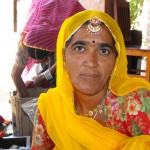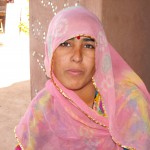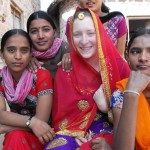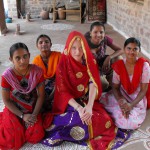Here in Rajasthan, India, the lifestyle is closer to the traditional way of living than in most states of the country. Some states even refer to Rajasthan as “the backwards state” because of the lifestyle and traditions that are still lived by the natives. Things like arranged marriages and caste system beliefs are seen anywhere in India still, but here in the village, they are still very prevalent in the every day life of a person.
A day in the rural villagers life here in Rajasthan would be considered uneventful for most, but it is the same life their ancestors lived and those before them. Waking up early to worship while hearing the puja (Hindu worship) at the temple, always at 8:30 (the only thing in India always on time…). Before and after the monsoon season are the only busy times of the year for the villagers of Rajasthan because of harvest. They must plant the seeds before the rains come, which last for nearly two months in the beginning of fall, then after the rains they must harvest the crops. This harvest season can last from one month up to two depending on the amount of rain that year.
On all other occasions in the village, the people do not have steady employment, which makes it hard to support their families. The younger generations of males end up being migrant workers and get recruited to work in the large cities. This is not a ideal arrangement either because these men do not make enough money to both support themselves and send money home, so they generally end up living in less desirable conditions in the cities.
Women are still oppressed in most village circumstances. The women are not allowed to marry in the village and once they are married, they have to leave their family in the village and live with their new husbands family in completely new village. This ends up very badly sometimes and most women end up very unhappy with their living status. The mother-in-law is the female leader of the household and if she has a vendetta against a daughter-in-law there can be very serious consequences for them. Sometimes, the mother in laws actually end up killing the daughter-in-laws and after going to jail, if that happens, they still don’t understand why what they did was wrong… The only way to combat these prejudices is to educate both men and women and hope for change that is slowly coming into India.
The caste system plays a major role as well. People in India are not supposed to marry or socialize outside of their caste and this is not just upheld in villages, but can be seen all over India in marriages and social prejudices. As for arranged marriages, these can also be seen all over the country, and when a couple has had a love marriage (getting to choose their own spouse), they are very lucky and also rare. In the villages though, the arranged marriages tend to be child marriages. Organizations are fighting against this, but it is still very common.
In the west, we generally think of 30 year old men getting married to 14 year old girls when we hear of child marriage, but it is a bit different. What usually happens in a village is that when someone gets married or dies, there is a large get together. During this time, if there are families who have un-betrothed children, they will pair them off to other un-betrothed children from another village. These children could be of any age but would not get married until later in life. Once another get together happens, these children will generally all be married at the same time because the villagers do not have enough money to support more gatherings. The then married girls will go live with their new families only when the families feel they are old enough. This could be anywhere from 14 to 24 though. It is a financial decision, and the more organizations interview these young child brides, the more the parents are realizing their mistakes and wishing things had gone differently.
Here in Chandelao though, things are a bit better off for all the villagers. Because the hotel is in the village, there is employment opportunity for men and some women to work here without venturing far from home. Other than the hotel, the women’s crafts center, Sunder Rang, employs women from this village that helps support their families. At first, the men didn’t want their wives and daughters working, but the village soon saw that the women were making a substantial difference in the families while they still had time to take care of their family duties. Now, there are more women who would like to be trained and work at the center, but until the business is scaled up, the employment is at capacity. In the near future though, we hope we can afford to hire more while increasing the existing pay wage and buy more capital.



